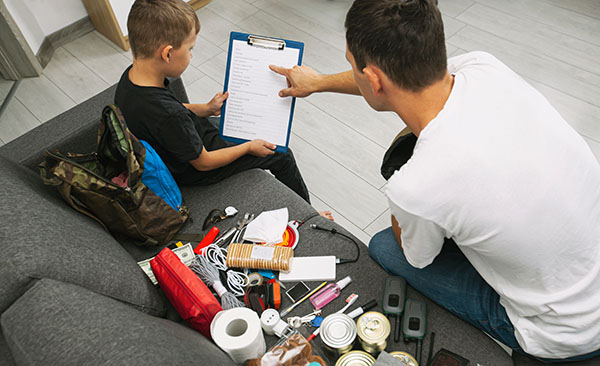
Off-grid living is usually associated with preppers and homesteaders who want to become more self-sufficient and independent. However, it's also become increasingly popular over the past few years among non-preppers who simply want to reduce their carbon footprint and live a more sustainable and environmentally friendly lifestyle.
If you're seriously considering moving off the grid, think about what you want and need in a property carefully. Picking the wrong off-grid home can be a costly mistake that will leave you and your family miserable. Start by identifying your family's needs and your options for growing food, collecting water and generating power.
You can then move on to identifying the best off-grid home suited for you and your family.
Read on to learn about different off-grid homes and the pros and cons of each. (h/t to Survivopedia.com)
1. Green housing
Green housing, also called eco-housing, can be as simple or as extravagant as you want it to be. You can design and build your own green home, but it helps to consult a green architect to cover the important points.
However, take note that this type of housing is more expensive than the others. That said, green housing emphasizes conservation by using various green techniques, such as building a garden on the roof or converting one of the exterior walls into a living wall.
Green homes are also often built with used or reused materials to minimize waste, hence their name.
2. Cob housing
Cob houses are built using a mixture of soil, sand, clay and hay. They are surprisingly very sturdy and fireproof. With proper maintenance, your cob house can last for generations to come. And if you decide to move in the future, your cob home will eventually deteriorate on its own and return to the earth, leaving zero waste.
Because cob houses are built with the earth, it makes use of thermal mass to keep you warm in the winter and cool in the summer. If you choose to make a cob house, make sure you have enough time and patience. Time is of the essence when building one because your materials will set and harden fast.
3. Cordwood housing
Cordwood homes go back to the first settlers. They're constructed by stacking softwood logs, which are then held together with a mortar mixture. The cavities in between the logs are typically insulated with sawdust.
There are more than 30 types of wood that can be used for building cordwood homes, including Pacific yew, bald cypress, cedar and juniper.
4. Rammed earth housing
Rammed earth homes are made with rock, dirt and other naturally occurring minerals in the earth. They're extremely reliable in different climates. They'll also last for a very long time if built properly.
Rammed earth homes are one of the cheapest types of off-grid homes on this list. Building one won't burn your budget since you can easily find the construction materials you need. However, building one will take some time, and it's a labor-intensive process.
It would help to hire a professional builder to make sure your rammed earth home is properly constructed.
5. Wooden cabin
Cabins are a favorite among homesteaders. These versatile structures can be built from logs, which you can harvest yourself if you have a wooded property. (Related: Sustainable and independent: Swedish family lives off-grid in a 160-square foot cabin in the woods.)
Many professional builders these days make pre-made cabins that you can tweak so that you don't have to start from scratch.
6. Earthships
Earthships are sustainable homes built out of recycled materials, such as glass bottles and used tires. These structures also make use of thermal mass so you stay warm in the winter and cool in the summer.
Earthships can be built anywhere on the planet. They are tough and resilient and can be designed to withstand natural disasters, including earthquakes and hurricanes. Earthships are also designed to have their own reliable food source. Most Earthships have a greenhouse so that you can grow food year-round.
7. Custom-made homes and trailers
If you have a trailer lying around, you may want to consider converting it into a small home. These homes are a great option for off-gridders who like to travel. But trailer homes are sometimes not suited for alternative energy sources, such as solar panels.
Trailer homes also require plumbing for sinks and toilets. But that shouldn't be a problem if you have access to mobile home parks with communal faucets and portable toilets.
8. Tiny houses
Tiny homes are a popular choice among young families who want to lower their living cost, save money and live a more self-sufficient lifestyle. The size of a tiny home can be adjusted based on your needs.
You can build your own tiny home from scratch or buy a pre-made one built professionally.
Follow OffGrid.news for more tips on living off-the-grid.
Sources include:
Please contact us for more information.





















